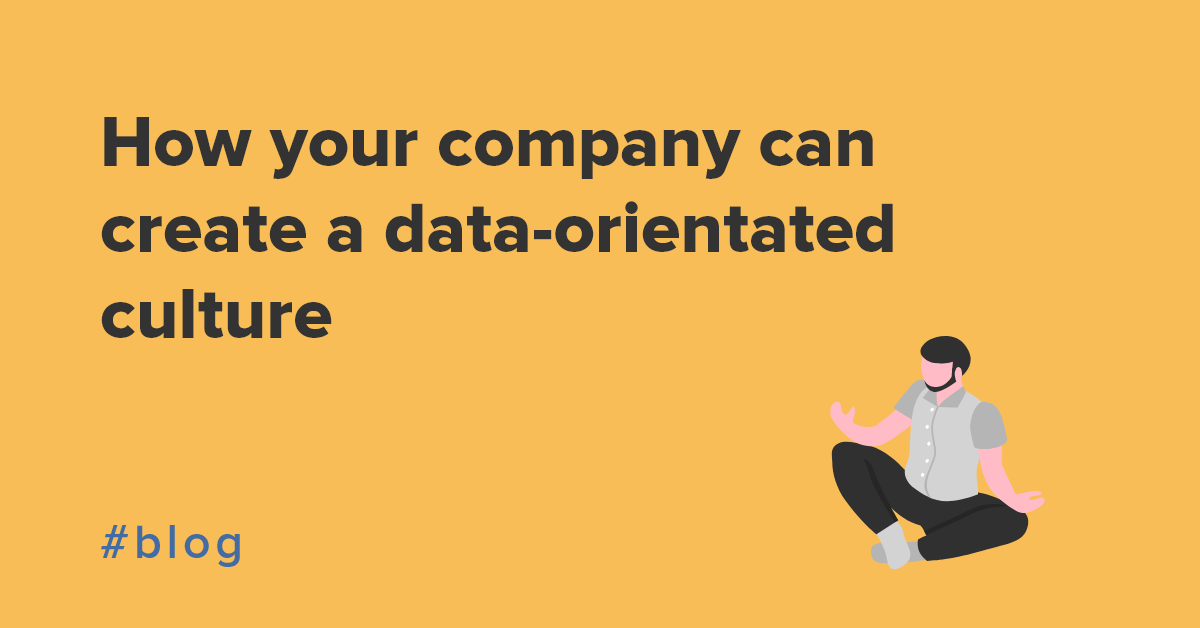Data is all around us. In fact, it’s projected that in 2022, we’ll produce 97 zettabytes of data globally. That’s 18 zettabytes more than the previous year. And with technologies like wearable technology and connected cars – the amount of data will only multiply.
To take advantage of this increase in data, your business needs to embrace data culture.
What is data culture?
By definition, data culture is where you treat data as the primary resource for business insights. It’s referred to when making decisions and all staff possess good data literacy.
Here are our suggestions on how to foster a data culture without spending a fortune:
1. Create a data team
With so much extra data out there, you’ll need a dedicated data team to keep up. This should be a small unit with a passion for making the most of your data.
The team will need:
- An IT expert who is proficient with databases, web services and Java.
- A member of your sales/marketing department who understands your products, customers and business model.
- An analyst who can efficiently read, understand and comment on data insights.
- A team leader who reports to management and keeps the team on track.
2. Encourage data literacy and learning across the business
Only 25 percent of employees feel fully prepared to use data effectively. This proves the need for data literacy to take a more prominent role in workplace training.
Clearly, there’s a need to bridge the data literacy gap. Boosting your staff’s self-confidence when it comes to data will prepare them for the future. They’ll ask the right questions, and make informed decisions backed up by data insights.
3. Train your employees to be analytical thinkers
Taking the training angle a little further, it’s important to shape the way your staff thinks about data.
We’re willing to bet that not all your employees have had much experience in statistical analysis, despite it being a crucial skill in the data age. Thankfully, with the right software and training, you can ensure your business is full of analytical thinkers.
Allowing your employees to get to grips with your data is a major step in creating a data culture. Especially if you have large amounts of data.
4. Set goals, a timeline and budget constraints
Once you have created your team, you need to give them their assignment: to create a data pool that gives your company real-time, actionable business insights.
Unless you struggle with large quantities of data or fundamental data problems, you should have your first actionable insights within a few weeks. But it doesn’t end there, getting to grips with your data is an ongoing process. So, don’t expect immediate perfection.
5. Equip your team
Give your team the tools necessary to do their job in a timely, efficient way. Don’t waste time and money on programming it yourself. It may seem like a large upfront expense, but it pays off in the long term with the faster delivery of data insights.
These tools can include business intelligence platforms, data integration suites, data quality suites, and databases. You will have to decide whether to keep data internally or to utilize an external service like AWS.
Spend time testing the tools before you purchase them. Most available tools allow a trial, so you can see if a tool is the right one for you without committing to a long-term contract.
6. Be very careful about data quality
Poor quality data is usually seen as the culprit when it comes to operational disarray and inaccurate analytics. Therefore, if you want to reap the business benefits of your data, you must ensure its quality. After all, any business insight is only as good as the data it’s based on.
Test new insights against their equivalent older ones. If there is a difference, find out the cause. This will help you guarantee the accuracy of your new insights. Not only that, but if users can’t trust the data you present to them, a data culture becomes much harder to achieve.
Here are some best practices to keep in mind to preserve the quality of your data:
Create the right metrics
You can’t accurately tell if there’s a problem with your data unless you’re measuring it correctly. Data quality metrics are the measurements by which you assess your business data. These give you a benchmark to work with.
There are a few metrics you can use to check the quality of your data. They include:
Completeness. Is all the necessary data present in your datasets?
Accuracy. How accurately does your data reflect the real-world object?
Consistency. Is there synchronicity between your databases?
Validity. How well does your data conform to required value attributes?
Timeliness. How accurate is the data at a specific point in time?
Integrity. Are you maintaining these data metrics as you move between different systems?
Find out more about creating data quality metrics here.
Do an audit of your data
Creating a data audit process can help you maintain data over time. Doing this helps you to understand how effective your current processes are.
Like other types of audit, they’re most effective at spotting issues when they’re done regularly. The less time between audits means less time for problems to go unnoticed.
Have a single source of truth
Trust is very important when it comes to data. If you can’t trust your data, what use is it to your business? A single source of the truth (SSOT) serves as a completely trustworthy data source that you can refer to.
Have the right mindset
To ensure data quality, everyone’s got to be on board with it. You can’t ensure high-quality data across your organization if you’ve only got commitment from a few employees. To get data quality in the minds of everyone in your company, you need to promote it at all levels of management, right up to the C-suite.
7. Future proof your data
When creating your data architecture, make sure it’s future proof. Ensure your team has the future of your business in mind. You need to be able to add new data sources, ensure scalability, deliver insights on different platforms and migrate to a new service provider.
You should also have the ability to view external data as there can be interesting correlations between your business and macro-economic trends.
8. Become a data evangelist within your company
Once your data team starts work, tell the rest of your business how important their activity is. After all, you may run into resistance from colleagues who don’t like change. But if you lead by example and show everyone how the new data insight tools can make their lives easier, they’ll come around eventually.
9. Create a data friendly environment in your business
Although appointing a data team is vital to establishing a data culture in your business, it’s only the first step. Next, you’ll have to establish a ‘critical mass’ of data-orientated people. This means making sure there are sufficient data champions in your organization so your culture is self-sustaining and creates further growth. To do this, you’ll need to foster an environment where these people thrive.
However, demonstrating to people that data is an invaluable asset to their job can be difficult and takes time. It will be tough, and you’ll have to make some tough decisions on the way, but in the end your business will be better off.
10. Create and maintain a place to easily access data
Companies with a data culture treat their data as a common resource – like the internet, a printer or the office water fountain. Everyone should be able to access the data they need to carry out their work.
It’s up to your data team to work with your IT department to provide a secure portal where they can easily access actionable, accurate information. Without this, user confidence in data would plummet - undermining your efforts to build a data culture.
This can be done with a business intelligence (BI) software that anyone, from a data scientist to a departmental manager, can use.
11. Choose the right business analytics approach
If you want to truly become a company with a data culture, you need to factor in your growth plans. After a few years, you may need more universal BI software.
During the selection process, you should ask questions such as:
- Is this software able to accommodate all users?
- Will it work seamlessly with your data sources?
- Can everyone in your business use the software easily?
- Can you create and share data insights?
- Does it fit within your budget?
Remember to also train your employees in how to use any software you adopt. Don’t let new tools become a frustration: provide your team with resources for fast learning.
12. The original data team must evolve
First and foremost, your data team needs to create an environment where data is available to all. But, once they’ve established that, their roles will change. They should become involved in:
- Data mentoring and evangelism. Your team should help with the implementation of insights, pointing out flaws in metrics and advising on how to make the most of the company’s data.
- Data exploration. By mining and querying data, your team should find important correlations, causalities and trends. This allows them to see patterns that will give your company a competitive edge.
Data is for everyone
When you embrace data across your business, you allow everyone, at every level, to make better decisions. So, be sure to follow the steps above to help you establish a data culture. But, as you do, don’t be afraid to experiment. These are the steps we recommend, but your business is unique and so may require a more tailored approach.
If you’d like to learn more about how your business can create a successful data culture, get in touch today.
By CloverDX
CloverDX is a comprehensive data integration platform that enables organizations to build robust, engineering-led, ETL pipelines, automate data workflows, and manage enterprise data operations.









